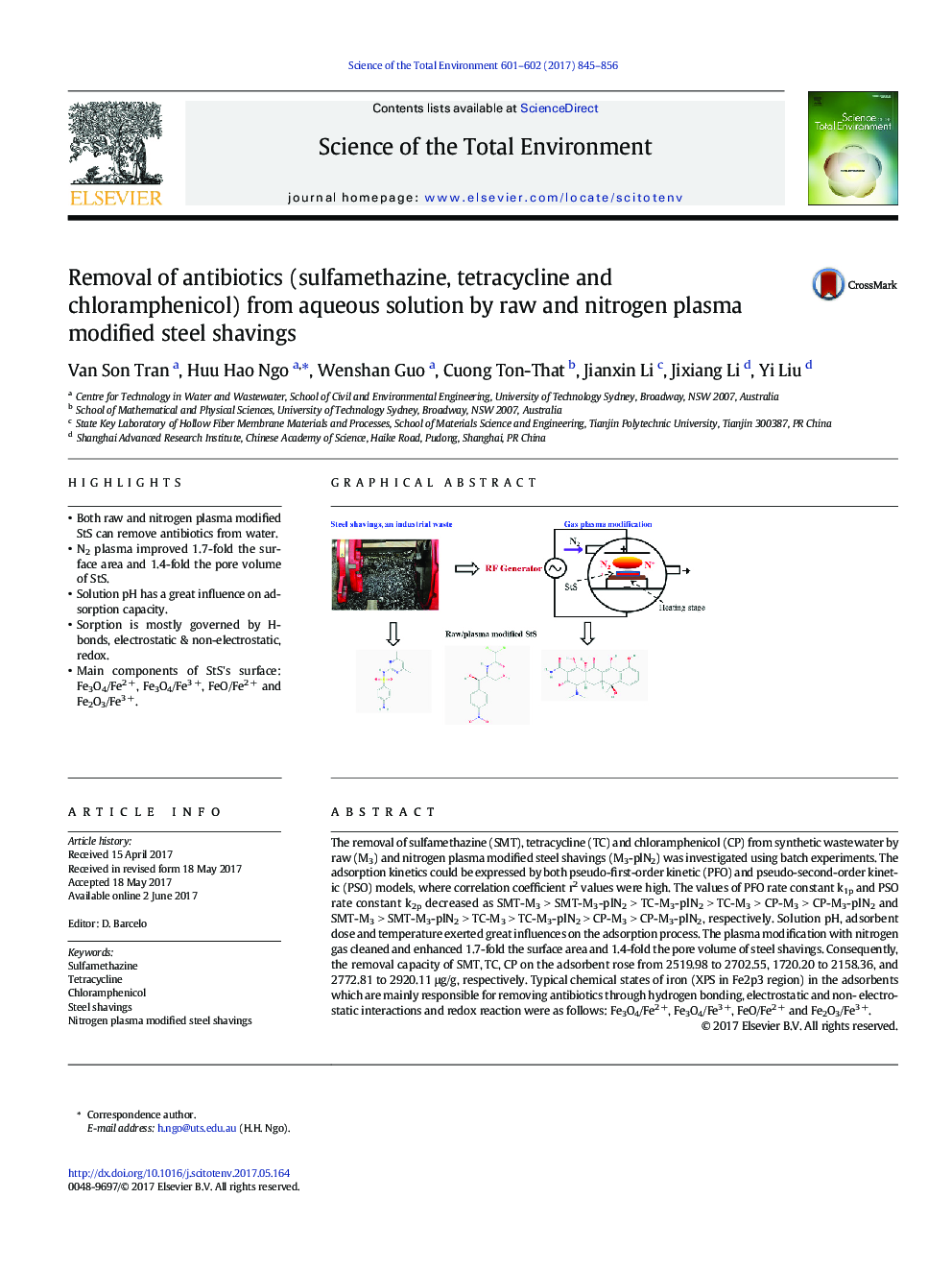| کد مقاله | کد نشریه | سال انتشار | مقاله انگلیسی | نسخه تمام متن |
|---|---|---|---|---|
| 5750440 | 1619697 | 2017 | 12 صفحه PDF | دانلود رایگان |
- Both raw and nitrogen plasma modified StS can remove antibiotics from water.
- N2 plasma improved 1.7-fold the surface area and 1.4-fold the pore volume of StS.
- Solution pH has a great influence on adsorption capacity.
- Sorption is mostly governed by H-bonds, electrostatic & non-electrostatic, redox.
- Main components of StS's surface: Fe3O4/Fe2Â +, Fe3O4/Fe3Â +, FeO/Fe2Â + and Fe2O3/Fe3Â +.
The removal of sulfamethazine (SMT), tetracycline (TC) and chloramphenicol (CP) from synthetic wastewater by raw (M3) and nitrogen plasma modified steel shavings (M3-plN2) was investigated using batch experiments. The adsorption kinetics could be expressed by both pseudo-first-order kinetic (PFO) and pseudo-second-order kinetic (PSO) models, where correlation coefficient r2 values were high. The values of PFO rate constant k1p and PSO rate constant k2p decreased as SMT-M3 > SMT-M3-plN2 > TC-M3-plN2 > TC-M3 > CP-M3 > CP-M3-plN2 and SMT-M3 > SMT-M3-plN2 > TC-M3 > TC-M3-plN2 > CP-M3 > CP-M3-plN2, respectively. Solution pH, adsorbent dose and temperature exerted great influences on the adsorption process. The plasma modification with nitrogen gas cleaned and enhanced 1.7-fold the surface area and 1.4-fold the pore volume of steel shavings. Consequently, the removal capacity of SMT, TC, CP on the adsorbent rose from 2519.98 to 2702.55, 1720.20 to 2158.36, and 2772.81 to 2920.11 μg/g, respectively. Typical chemical states of iron (XPS in Fe2p3 region) in the adsorbents which are mainly responsible for removing antibiotics through hydrogen bonding, electrostatic and non- electrostatic interactions and redox reaction were as follows: Fe3O4/Fe2 +, Fe3O4/Fe3 +, FeO/Fe2 + and Fe2O3/Fe3 +.
94
Journal: Science of The Total Environment - Volumes 601â602, 1 December 2017, Pages 845-856
